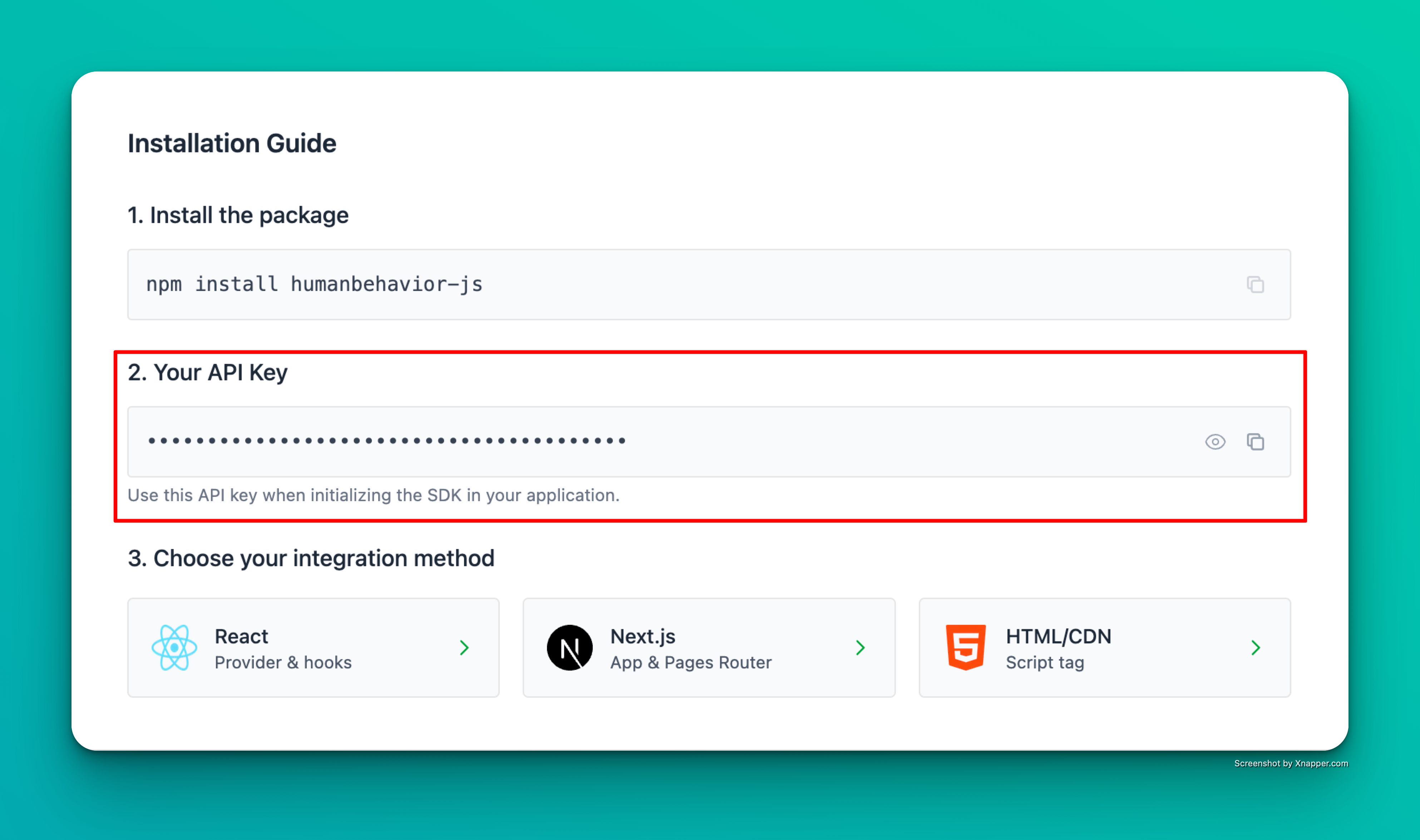Quickstart
Human Behavior works seamlessly to record sessions on your Remix app.
Show How to get your API Key
How to find your Public API Key:
Flow: Project Home → Integrations → Human Behavior SDK → Kebab Menu → Configuration → Public API Key

Example screenshot – your actual API key will be different.
Step 1: Installation
npm install humanbehavior-js
# or
yarn add humanbehavior-js
Step 2: Basic Setup
Add the Tracker to Your App
Use the Remix-specific setup for the best integration and automatic tracking:
Step 1: Create a loader in your app/root.tsx:
import {
Links,
Meta,
Outlet,
Scripts,
ScrollRestoration,
useLoaderData,
} from "@remix-run/react";
import { HumanBehaviorProvider} from 'humanbehavior-js';
import type { LinksFunction, LoaderFunctionArgs } from "@remix-run/node";
// Add loader
export const loader = async ({ request }: LoaderFunctionArgs) => {
return {
ENV: {
HUMANBEHAVIOR_API_KEY: process.env.HUMANBEHAVIOR_API_KEY,
},
};
};
export function Layout({ children }: { children: React.ReactNode }) {
...
}
export default function App() {
const data = useLoaderData<typeof loader>();
return (
<HumanBehaviorProvider apiKey={data.ENV.HUMANBEHAVIOR_API_KEY}>
<Outlet />
</HumanBehaviorProvider>
);
}
That’s it! The SDK now automatically tracks user interactions, navigation, and console events. Everything past here is optional.
Optional: Advanced Features
Track Custom Events
import { useHumanBehavior } from 'humanbehavior-js/react';
export default function MyComponent() {
const tracker = useHumanBehavior();
const handleButtonClick = async () => {
// Track custom event
await tracker.customEvent('button_clicked', {
buttonLocation: 'header'
});
};
const handleLogin = async (user) => {
// Identify user after successful authentication
await tracker.identifyUser({
userProperties: {
email: user.email,
name: user.name,
userId: user.id
}
});
};
return (
<div>
<button onClick={handleButtonClick}>Click Me</button>
</div>
);
}
Environment Variables
# .env
HUMANBEHAVIOR_API_KEY=your-api-key-here
// In your code
const tracker = HumanBehaviorTracker.init(process.env.HUMANBEHAVIOR_API_KEY);
Troubleshooting
- Check browser console for any error messages
- Verify your API key is correct
- Ensure the tracker is initialized before any user interaction


